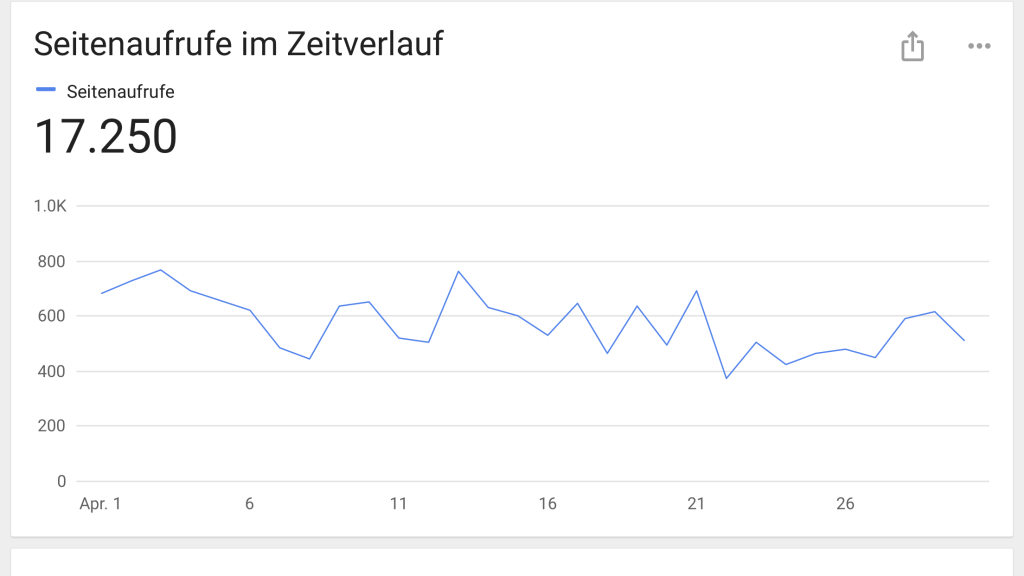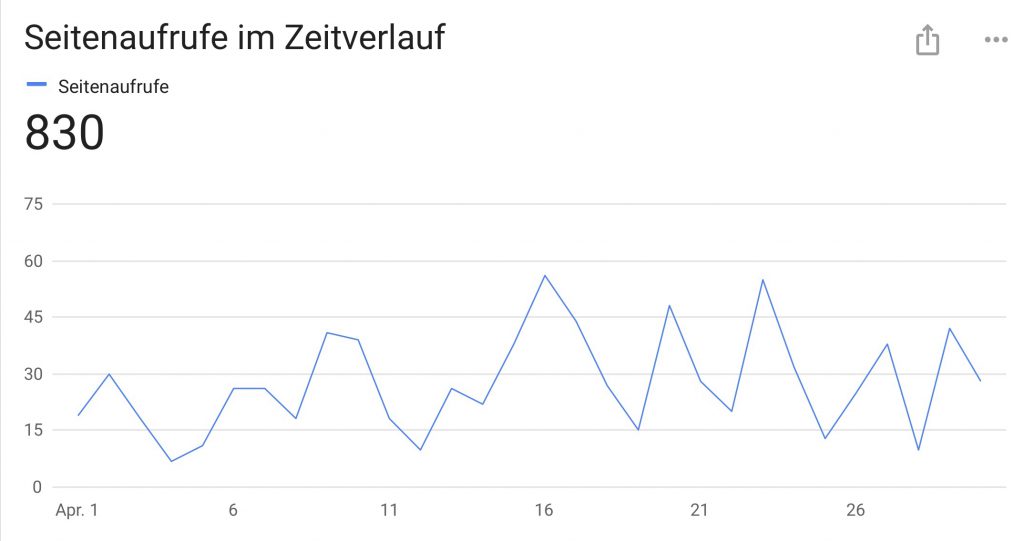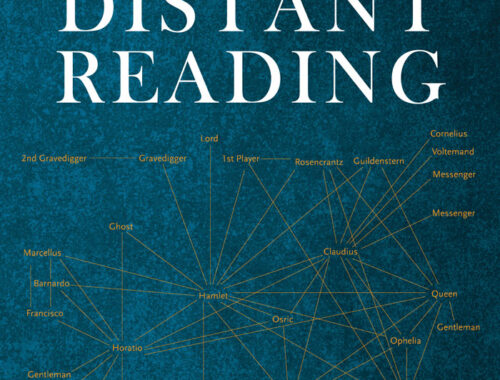
Successful humanities blogging
Inhalt / Content
I have two very different blogs. One was not maintained last year at all, because I preferred to push the other one. One of them was accessed an average of 570 times a day last year, the other one about 17 times. I regard both blogs as successful projects, although in very different ways. Now you can imagine that the blog with the lower number of hits is this one. Why I still call it a successful blog and why successful humanities blogging just doesn’t mean the same thing as successful blogging on other subjects, that’s what I’d like to talk about today.
Blogging goals and why you need them
But why am I telling you this at all? Well, in your blogger’s life there will be times in which you just can’t motivate yourself. You will definitely ask yourself why you are doing all this from time to time. Blog goals will carry you through these phases. But beware! Unrealistic goals have exactly the opposite effect. You feel like you are constantly running after them and not achieving anything at all. That’s why today I share my experiences as a DIY and humanities blogger with you. Because from this experiences I can report that different blog niches work very differently and that “successful blogging” can look very different.
What can “successful humanities blogging” be?
Often 1000 views per day are viewed as some kind of a magic number. That is, I guess, at least in part, because with less hits the monetization of a blog e.g. via Adsense is quite useless. Nevertheless, many bloggers state that they are actually happy with their blog projects, although they rather reach 1,000 hits per month. So the answer to the question is as clear as it is vague: successful humanities blogging is something different for every blogger. But I’ll try to come to a clearer answer here. In the end, I hope you’ll get something to measure yourself and your blog against. Maybe a few numbers will help for a start.
The magic DIY-blogging niche
I have already mentioned it at the beginning and emphasize here once again. My blog with the 570 calls/day is not a humanities blog. It is a DIY (Do It Yourself) blog. And, by the way, as such it is quite small. In April 2020 it had 17,250 hits:

Probably the most successful German DIY blogger Caroline Preuss reports that her blog had over 110,000 hits in May 2017. So you see that much, much more is possible in the DIY-niche.
Now there are some other elements hanging on my DIY-Blog. I have a Facebook page with about 900 fans. There is an Instagram account with about 1,500 followers. I use Pinterest and have a profile that generated about 955,000 impressions in April 2020. And I made quite a few YouTube videos, so my channel has some more than 10,000 subscribers (May 2020). Still the comparison with the (now also former) DIY blogger Caroline Preuss above shows that this is rather little for the do-it-yourself niche. So yes, as a blogger from the do-it-yourself sector you can set yourself a goal of 1000 hits per day and then achieve it. If you would like to do so.

Can we (humanists) do that too?
Well, it is a simple calculation. How big is a do-it-yourself target group, even a very specific one (my own blog, for example, was specialized in crochet)? And how many people, on the other hand, are interested in a specific humanities topic? Yes, our niche is small. But that is not all. Our niche also works differently. This was shown to me by the lively exchange with colleagues, the public relations work of various projects in which I was working and also the meanwhile 7 years of work as a humanities blogger. To bring the whole thing to a number: I believe that 100 readers per day is a good and achievable goal for a self-hosted humanities blog. You might reach even higher numbers if you blog on wordpress.com or hypotheses.org.
To help you compare, here are some relatively recent figures from my blog statistics. In April 2020 I had a total of 830 hits. My Facebook page had 44 fans. My Instagram profile reached 140 followers. And my Pinterest presence generated 105,357 impressions in April. And, of course I have a Twitter profile. On this profile I had about 1200 followers. Now some of the social media channels are only about one year old and those of the DIY blog are already 4. But we can clearly see here that the numbers are simply smaller. Strictly speaking, they only make up about 10% of what I achieved on the DIY blog in the comparison period. And this although I have not been active there for a year.

Three indicators of successful humanities blogging
Now at the latest you’re probably wondering how on earth I can call this blog successful. Quite simply, it is because of the quality. What I mean is, the quality of the readers, so for example of you! I don’t have that many readers here, but I do have exactly the ones I want. I notice this especially when someone replies to a newsletter, sends me a PN on some channel or simply addresses me in real life, e.g. at a conference and tells me to have read my blog. In this way, I have been able to have incredibly nice conversations in the first year after the relaunch and reorientation of this blog on May 1, 2019. So if you have a humanities blog yourself, your primary blog goal could be to get to know your readers and exchange ideas with them.
community, links and now and then a little surprise
If your community considers your content to be so valuable that they like to share it, this is another great success. For me it starts for example on Twitter, when for example big accounts like the one of the university library Hamburg or colleagues I appreciate share a tweet of mine with a link to the blog. Social media are often fast-moving and a shared tweet may quickly attract attention and let it fade away just as quickly.
That’s why the next step for me is reached when someone shares my blog not only there, but also on their own website, portal or learning platform of their own institution. This year I was happy about a link on the portal digitale-Lehre-Germanistik of the MWW research association and about some links in Uni-Moodles. How can you recognize such links? Well, they will appear in your statistics as referral traffic. So a second good and realistic indicator for successful humanities blogging can be the sharing and linking of content by colleagues and institutions that you particularly appreciate.
And then sometimes something unexpected can happen. For example, in the first year after the relaunch of my blog, an editor from Deutschlandradio Kultur, a German radio station specialized on cultural subjects, called me and asked me for an interview. That was of course an extremely nice blogger moment. And such moments are of course also a success and can bring your blog quite a bit forward.
Three realistic blog goals for your humanities blog
To summarize this again briefly and concisely, here are three measurable success indicators for your humanities blog:
- exchange with your community: mails, PNs, chatting with colleagues in real life about your blog,
- links from other bloggers and on pages of projects/institutions you appreciate: “referral traffic” in your statistics
- situations that make you think “yeah, it was worth it”: surprising, unexpected and always in a different form, these moments will come around the corner and overwhelm you, that’s for sure.
Make a virtue out of necessity
So instead of getting frustrated by the fact that you reach far less than 1000, 500 or even 100 readers a day, you should think carefully about what you want to achieve with your blog and how you can measure it. You can set ambitious goals, but choose those that you can achieve as a humanities blogger. Because goals will carry you through your blogger’s everyday life and achieving them will take you much further!
Translated with www.DeepL.com/Translator (free version)
You May Also Like

FRANCO MORETTI’s “DISTANT READING” – A COMMENT
September 24, 2020
CALL FOR BLOGPOSTS ON THE TOPIC “COLORS OF DH”
July 30, 2020

